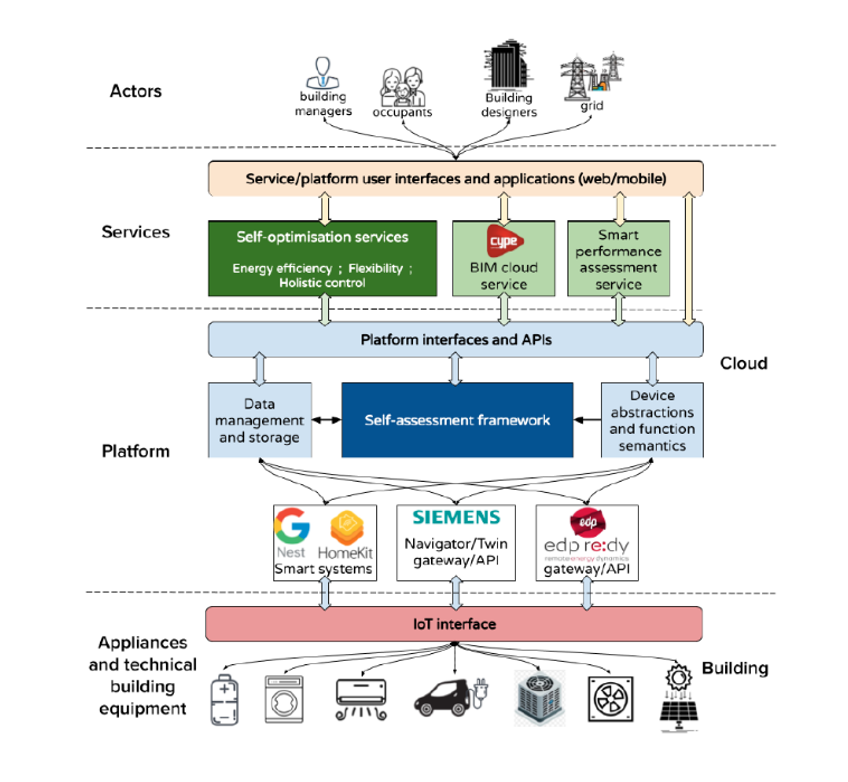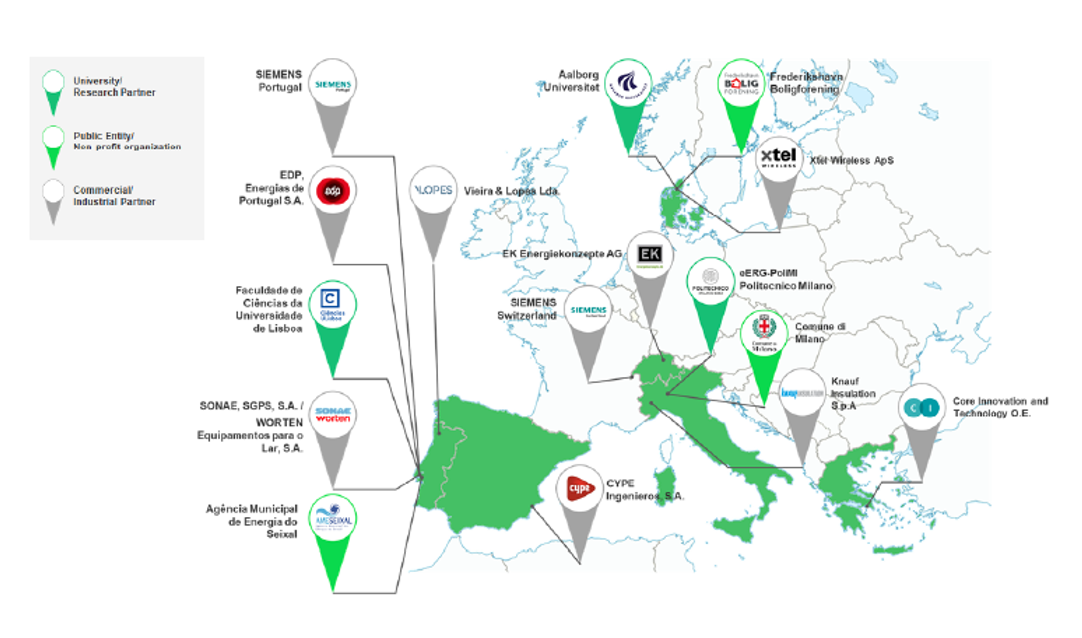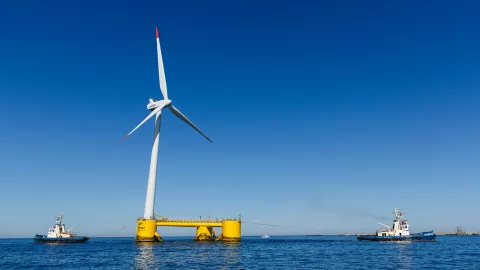Key data
Duration: 26 months
Overall budget: 5.6 M€
Demonstrator cities: Seixal, Aalborg, Milan, Aspern, Lisbon and Madrid

Goals
Increased energy efficiency and decarbonization of the energy system are two primary objectives of the European Energy Union. These objectives are clearly demonstrated in ambitious EU targets for 2030, namely, reaching a 32% share of renewable energy and increasing energy efficiency by at least 32.5%. Meanwhile, EU buildings remain predominantly inefficient, accounting for 40% of final energy consumption and 36% of the total EU CO2 emissions. Part of this efficiency gap is due to a deficit in knowledge about the overall real-life energy consumption and performance of buildings and their energy consuming equipment.
The SATO project tackles this challenge by implementing an IoT building management platform (SATO platform), a framework of innovative energy services (SATO services), and user-centric application that will enable the building to self-assess and self-optimize its energy performance and thus lead to (i) a more efficient building by lowering their energy consumption, (ii) smarter buildings that can provide energy services to its occupants and the electric grid, and (iii) increased user satisfaction through an improved indoor comfort and air quality:
The SATO platform
The SATO platform combines and extends two commercial award-winning cloud-enabled platforms - already deployed in the market - and provides software APIs and IoT hardware devices to monitor and control building appliances and equipment. The two existing platforms, one for service (SIEMENS TWIN) and one residential buildings (EDP re:dy), are integrated with other successful commercial smart systems (e.g. Google nest or Apple Homekit framework).
The SATO services
The SATO service offering is composed of a framework of services enabling the building to self-assess and self-optimise itself so as to become an active element of the energy system. Amid this central goal, the service framework will offer enhanced energy efficiency, flexibility to the grid and an optimal indoor environment to the buildings’ occupants.
The user at its heart
SATO will also create a mobile application that combines building equipment control and information services into user interaction services. This will enable users, regardless of their educational background, preferences, or income, to interact with their homes and service buildings.
To achieve these goals, SATO will deploy the SATO platform, SATO services and the mobile application in 8 very diverse pilot buildings dispersed over 5 different EU member states to showcase the cross-cutting commercial and technological potential of the project. Within the scope of the demonstration activities, SATO anticipates a yearly CO2 emissions reduction target of 344,6 t of CO2 while saving 2,2 GWh of primary energy per year.
Highlights
- EDP NEW will extend the existing cloud-based EDP re:dy platform and lead the definition of the specifications and requirements of the SATO platform
- Consortium formed by 13 partners from 5 EU member countries: Portugal, Spain, Italy, Greece, and Denmark as well as 2 commercial partners from Switzerland.
Demonstrators
The SATO demonstrators aim at showcasing the seamless integration of the developed SATO solutions in diverse building typologies (a university library, service buildings, building blocks with multiple apartments as well as single-family houses):
- Residential buildings & Multi apartment blocks | Seixal, Portugal
- Multi apartment blocks& Municipality office | Aalborg, Denmark
- Residential buildings & Multi apartment blocks | Milan, Italy
- Office building | Aspern, Austria
- Public library & Retail stores | Lisbon, Portugal
- Retail stores | Madrid, Spain
Various types of domestic appliances such as heat pumps, boilers, HVAC systems, washing machines, dryers, lighting and other electrical household appliances will be part of the demonstration activities. Within the extensive demonstration activities (19 months), different operational experiments will be conducted testing several types of control modes (ON/OFF, power modulation, etc.) possible for a given type of appliance. In addition, several pilots will comprise e-charging points, electric vehicles (EVs), photovoltaic systems, local energy storage and the thermal inertia of the building.
EDP NEW scope
EDP NEW will engage in:
- Extending the EDP re:dy platform and integrate this existing commercially available platform with the SATO platform by closely interacting with its third-parties EDP Comercial and the Smart Energy Lab
- Developing novel, innovative energy services for occupants of the building and the building itself
- Coordinating the Work Package 1 on specifications and requirements of the SATO platform
- Co-leading and evaluating the demonstration activities in 8 very diverse demonstrators dispersed over 5 different EU member
Partners


